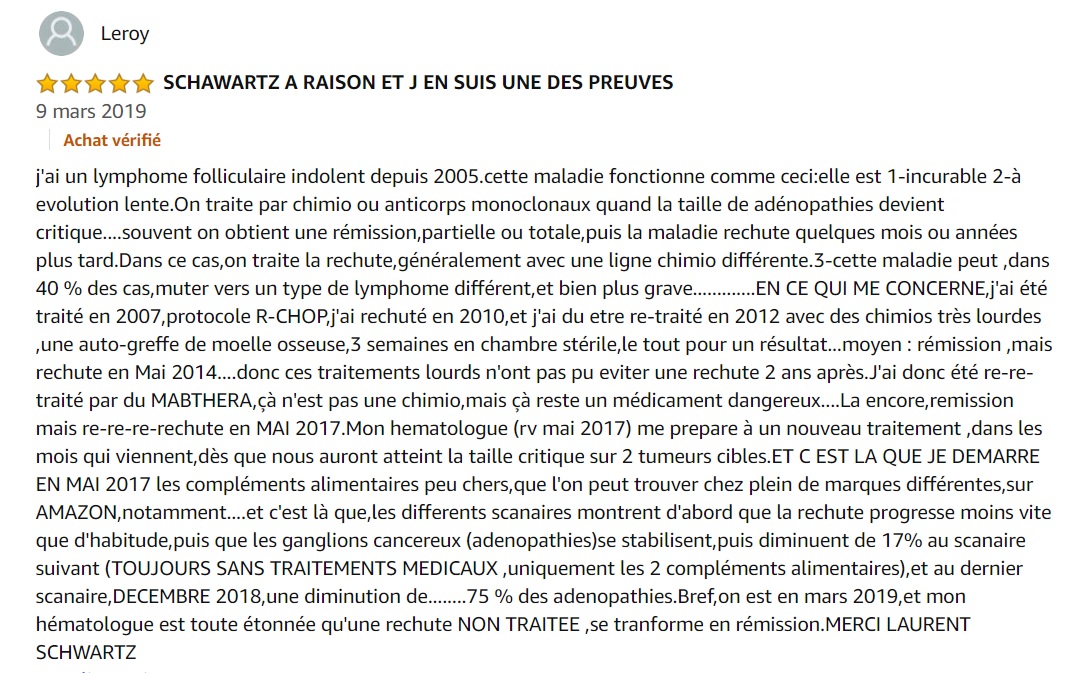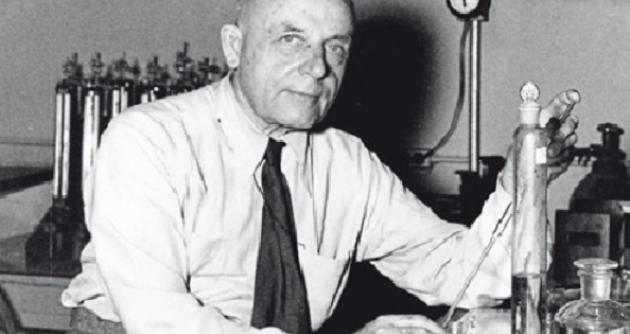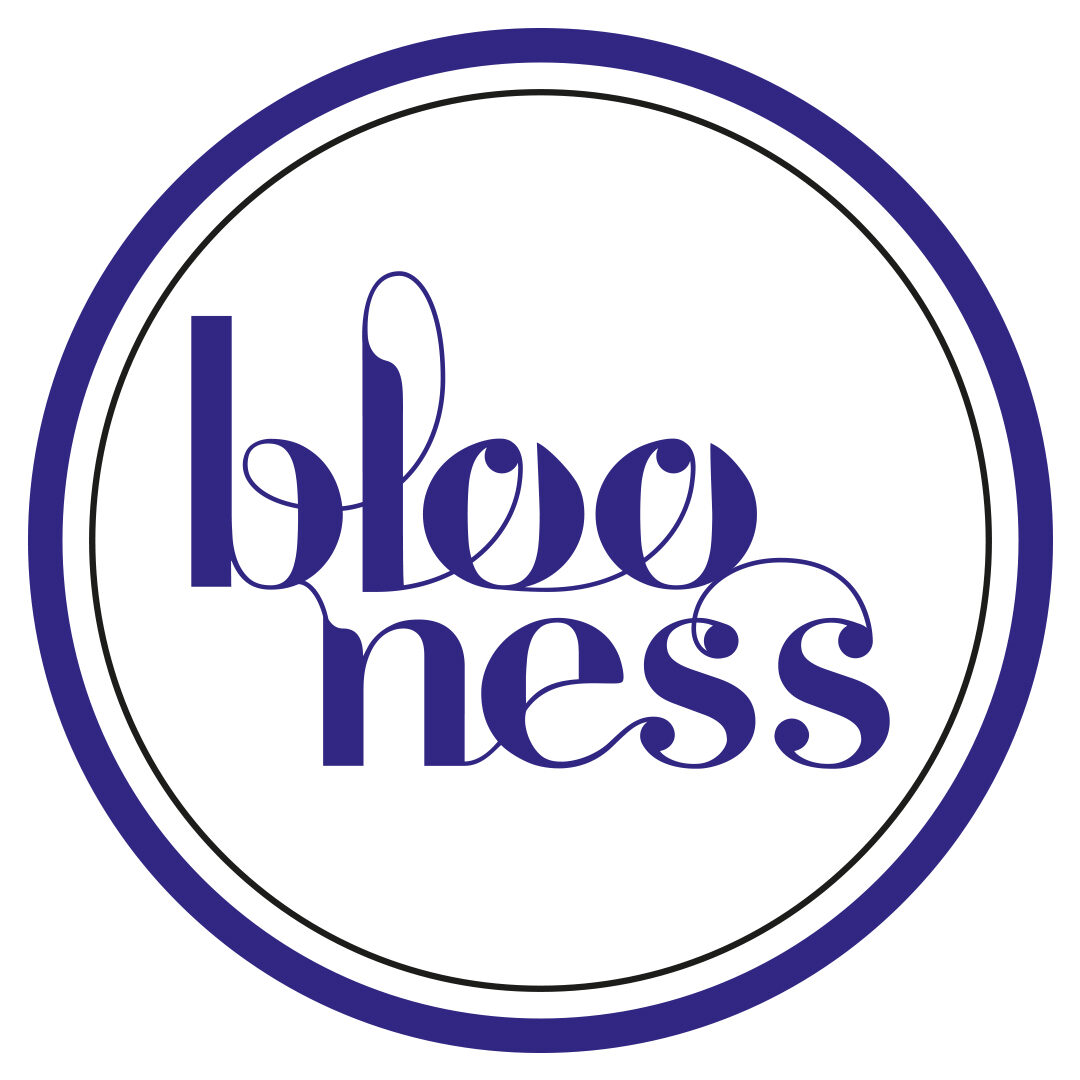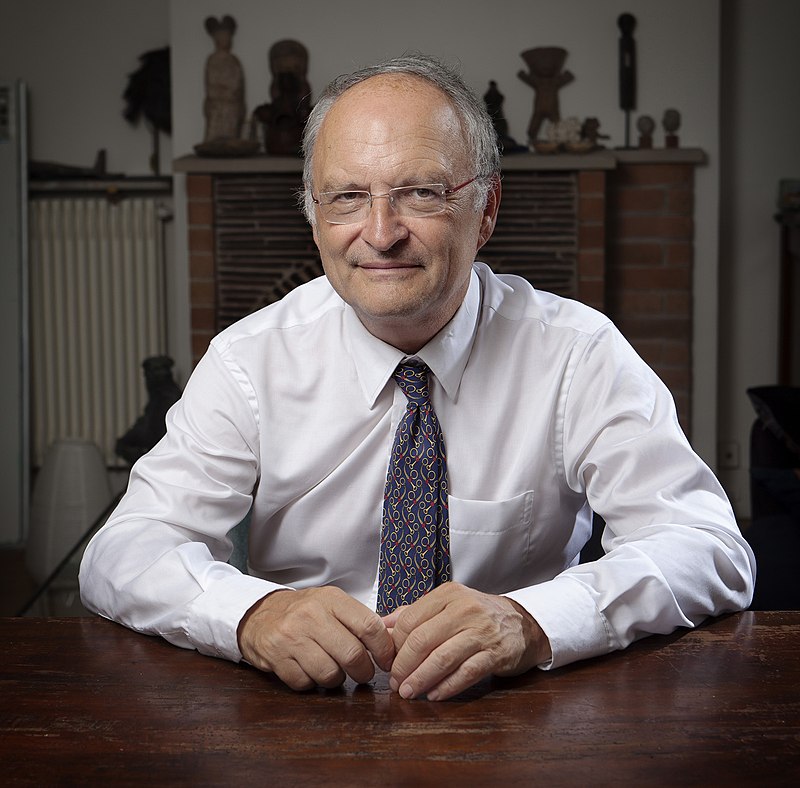Here is a complete summary of the Laurent Schwartz protocolthe famous oncologist considered an "iconoclast" by some of his peers. In fact, it's a treatment developed in order to inhibit tumor growth of cancer cellsbased on the metabolic hypothesis of cancerAccording to this study, the cause of this disease is a defect in the mitochondrial activity of the body's cells, and an inability to manage sugar combustion.
To date, there is no official proof that this treatment is effective. But some testimonials seem to show an improvement in cancer sufferers, and many Internet users around the world have begun testing it, with varying degrees of success.

The scientific reasoning behind the METABLOC treatment is detailed in various books by Dr Laurent Schwartz, including the famous Cancer: a simple, non-toxic treatment.
Who is Laurent Schwartz?
Laurent Schwartz is a French oncologist. born in 1958. He was a researcher at the National Cancer Institute, then a resident at Harvard University's Massachusetts General Hospital, where he specialized in radiation oncology in the 80s, before becoming a hospital practitioner in France in the 90s.
He became famous for his theory that cancer is a metabolic disease rather than a genome-related disease considered "obscure".
This content is part of the guide Blooness, the guide to the ideal human diet, the summary of which you can find here 🌱🥑
To do this, it relies on the Warburg effectnamely a drop in the cell's energy yield. He then brought together scientists from different backgrounds to explore this avenue, pointing the finger at the failure of modern oncology in his book "Metastases: the truth about cancerThis led to his exclusion from the Assistance Publique des Hôpitaux de Paris, before being reinstated.
Since then, Internet users and numerous websites selling food supplements have seized on the treatment he has developed. For his part, oncologist Laurent Schwartz is trying to launch standardized trials to confirm or refute the results of his treatment, but he seems to have come up against a number of administrative hurdles.
French-speaking subscribers will receive the newsletter in French, and all others will receive an English version.
The original Warburg hypothesis
Warburg, winner of the Nobel Prize for Medicine in 1931, observed just under a century ago that fast-growing cancer cells had glycolysis rates up to 200 times higher than normal cells from the same tissue.

Otto Warburg postulated that this change in metabolism was the fundamental cause of cancer. However, today's official oncology considers this "Warburg effect" to be the result of a genetic mutation rather than a cause.
Laurent Schwartz's theory and research
However, there is consensus that the mitochondrial activity of tumor cells is affected. Dr. Laurent Schwartz therefore considers reduced cellular energy yield - for which mitochondria are responsible - such as the source of cancer. This is due to normal aging of the mitochondria, which are no longer able to burn glucose to convert it into energy, leading to fermentation inside the cells, which grow and proliferate.
In a way, Laurent Schwartz is looking to boost mitochondrial activity. To achieve this, he and the scientists he has assembled have studied all food supplements and medicines thatsimultaneously enable restore mitochondrial life for as long as possibleto slow tumor growth.
After conducting a hundred or so tests on mice, the group led by Laurent Schwartz initially observed that the combination of lipoic acid (pyruvate dehydrogenase activator) and hydroxycitrate (citrate lyase inhibitor) stabilized implanted tumors in mice.
This will form the basis of the metabolic treatment of the controversial oncologist, which he put down on paper in his book Cancer: a simple, non-toxic treatment. In this book, the contrarian oncologist recommends drastically reduce sugar and fruit consumption. carbohydratesvia a ketogenic dietcoupled with the consumption of certain dietary supplements designed to boost mitochondrial activity.
Since then, Dr Laurent Schwartz has suggested combining his treatment with conventional therapies (radiotherapy, chemotherapy, etc.), which are now more targeted, more effective and less violent than in the past.
METABLOC: metabolic treatment in practice (doses, medications)
Doctor Laurent Schwartz has put forward a number of different protocols, which web users have tried out with varying degrees of success.
Here's an overview of these protocols.
What is provided below is obviously not a prescription, nor even a recommendation, but a simple summary of the alternative treatment, which should be taken with a grain of salt.
Before trying anything, it's a good idea to talk to a doctor, and visit Doctor Laurent Schwartz's website to ensure that the information you find here is always up to date.
Protocol 1: Hydroxycitrate + Alpha-lipoic acid
The combination of these two molecules forms the basis of the METABLOC (Dr Laurent Schwartz's metabolic treatment). Taken together, they were shown to slow tumor growth in mice. Here are the recommended doses.
- Alpha-lipoic acid Sodium R-lipoate: 600 mg by slow intravenous injection or 800 mg in the morning and 800 mg orally in the evening. Sodium R-lipoate can replace alpha-lipoic acid.
- Hydroxycitrate 500 mg tablets, morning, noon and evening before meals.
Hydroxycitrate by Solgar can also be found on the Onaterra website.
Protocol 2: The ketogenic diet
Visit ketogenic diet is inseparable from the first protocol, which consists of combine hydroxycitrate and alpha-lipoic acid. The aim of this diet, which is becoming increasingly popular throughout the world, is to give as little "fuel" as possible to cancer cells, which are fond of glucose.
This involves :
- The total elimination of high glycemic index and strong glycemic load jams, confectionery, pastries, sweet drinks...
- Total elimination of all starchy foods Bread, pasta, rice, potatoes, polenta, white and kidney beans, lentils...
- The complete removal of fruit, except for berries in moderate quantities.
- The removal of vegetableswith the exception of most green vegetables.
- Significant increase in fatty foods Eggs, olives, avocados, olive oil, coconut oil mixed with vegetables, nuts in moderate quantities, mayonnaise, fatty meats, fatty fish, cream, butter (ideally clarified ghee butter), certain cheeses (not yoghurts and cheeses made from pasteurized cow's milk).
- Moderate consumption of proteinsbecause the body can manufacture glucose with proteins (neoglucogenesis); you shouldn't exceed 1g of protein per day and per kilo of body weight; (100 g of meat contain an average of 25 g of protein; 100 g of fish 20 g of protein, 100 g of hard cheese 25 g of protein).
The Blooness guide contains ten chapters devoted to the ketogenic diet and how to implement it.
Protocol 3: MMS or chlorine dioxide
A year ago, Dr. Laurent Schwartz launched the sodium chlorite coupled with hydrochloric acid. While some may be skeptical about the efficacy of such a remedy, others have adopted this protocol as their own. You need to be extra vigilant with this protocol, which is likely to cause irritation, especially if the dosage is wrong.
Originally, this mixture led to the chlorine dioxide is approved for the chemical purification of tap and drinking water, and for keeping swimming pool water free of bacteria. Some hikers use it to purify their water.
The kit is sold in certain food supplement stores.and each time you have to mix it yourself, using a pipette:
- Mix 1 drop hydrochloric acid with 1 drop sodium chlorite in a glass.
- Wait 3 minutes for amber-colored chlorine dioxide to form.
- Dilute in a glass of water and drink immediately.
The protocol is to take up to 10 drops a day every 2 hours, then increase the dose to 3 drops per dose.
Protocol 4: Methylene blue
One of the latest avenues explored by Dr. Schwartz's group is the methylene blue. For the moment, it's impossible to know the recommended dosage, as it depends on each individual case.
Protocol 5: Ancillary tracks
Other supplements are suggested in Dr. Schwartz's books. Some are the fruit of experiments carried out by other oncologists, notably in the United States, which have reportedly produced satisfactory results for certain patients.
Some also follow the same logic: reduce blood glucose to the maximum, to avoid fermentation in cells lacking sufficient mitochondrial activity, and boost metabolism.
- Visit vitamin D10,000 IU / day
- Low Dose Naltrexone: very low-dose Naltrexone, 3 to 4mg before going to sleep, prescribed by prescription only. It can be ordered from this site.
- Metformin, a drug normally prescribed for diabetes, suggested up to 3g/day.
- Diclofenac (sold under the name Voltarene, 75mg): anti-inflammatory that reduces glucose intake
- A proton pump inhibitor, e.g. omeprazole: 20 to 40 mg daily
- Amiloride: 10 to 40 mg three times a day. Prescription only.
- An anhydrate carboxylase inhibitor, such as acetalozamide (Diamox): 250 mg daily. Prescription only.
It's impossible to know which of these drugs should be taken simultaneously, at what time, in what context and at what stage of the disease. This is a synthesis of all the leads put forward by Laurent Schwartz himself, or by the movement around the metabolic pathway to cancer.
You'll need to be followed up by an oncologist who is already familiar with the issue, if you hope to find a solution. Unfortunately, many patients feel neglected by official medicine, which for the time being remains silent on the metabolic track, and only recommends chemotherapy treatments, without any advice on the nutritional and sugar issues.
At their peril, some patients start taking parallel medications, sharing their results on the Internet...
For his part, Dr. Laurent Schwartz continues his crusade, with few resources allocated to his research for the time being. Will the future prove him right?
Next chapter: Glycemic index, glycemic load and insulin: everything you need to know about blood sugar levels
Previous chapter: LCHF / Keto and fat loss


11 Responses
the problem is that we don't know what to take together and the incompatibilities between these molecules!
Hello Pierre,
I fall 3 months right on your comment and was born on July 13, 1943! With the added bonus of having been diagnosed in 2017 with lymphone follculaire grade I-II. Followed at the iPC in Marseille and not in Nice where they wanted to direct me, I only had follow-up without treatment. In 4 years, I had two scans and two PETSCANs. My cervical nodule was 22 x 15 mm. At the same time, my biological check-up has always been perfect. I've been living in Portugal for 2 years now, as I was not advised against this expatriation. I have a lousy follow-up by an onco-haematologist who categorically refuses me a CT scan, so everything comes down to a blood test 4 times a year, which is still perfect.
Seeing what you've been through, I admire you and hope you're still well.
I have a very healthy lifestyle and an extraordinary energy level.
I too thank Laurent Schwarzt!
I wish you all the best.
Most sincerely.
Janine Andresen
I am looking for the address or contact details of Dr. Schwartz.
I am looking for patients who follow Dr Schwartz Laurent's treatment and live in the Var or neighbouring departments.
Hello, you can watch one of Dr Schwartz's videos on You Tube which features testimonials from people cured of even advanced cancers.
Hello, for the past 15 days I've been unable to obtain methylene blue capsules! The pharmacy no longer receives the orders it used to make from Marseille. Do you know of any other sources of supply? Thank you for your help.
Yes, you can
1/read Mark Sloan's book "The Ultimate Guide to Methylene Blue", sold at Amazon, a very affordable read, which describes metabolic medicine, gives dosages, and the address to buy BDM in the USA,
2/ buy from Amazon (yes!): methylenblau from Sanuvit 100ml bottle. (www.sanuvit.com)
Pharmaceutical grade, very pure.
Hello Alicia,
My mother is 77 and has just been diagnosed with colon cancer with lymph nodes in her lungs and on her aorta. I'm looking for people who have practised Dr Schwartz's method, but I can't find any on Dr Schwartz's website. I don't know where to turn. Thank you for your help.
In which region are you; Someone I know 100 KMS FROM PARIS is successfully doing Dr. Schwartz's protocol with methylene blue. Possible visio. Bon courage
Hello,
How can I contact this person? Thank you
Hello paillet,
I'm contacting you for my wife who is now very weakened by this horrible disease, we are very open to these different practices and we would like to meet people following these protocols, we are 200km from Paris, perhaps we are not very far.
I'd be delighted to hear from you.
thank you very much